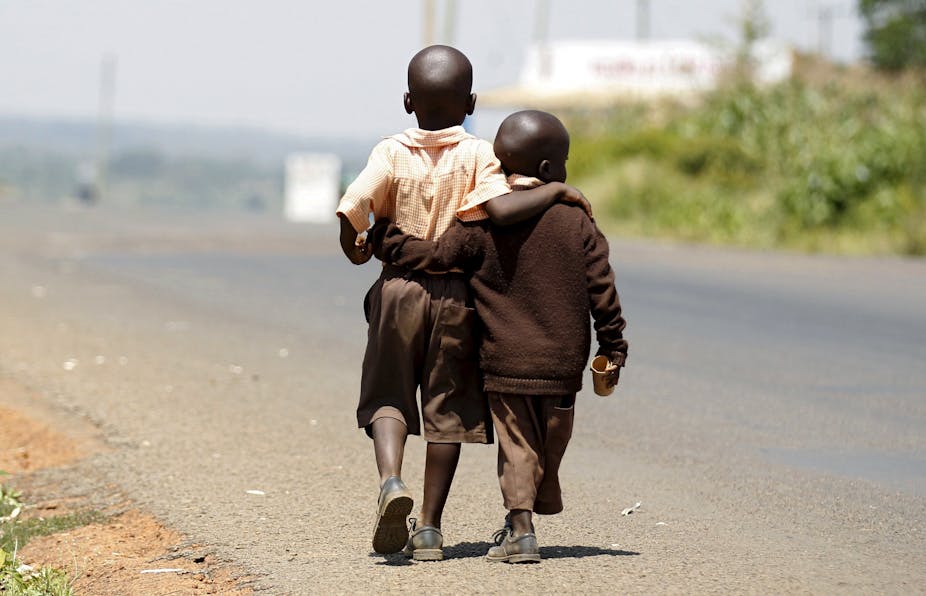Across Africa – from South Africa to Botswana, Kenya to Rwanda and many others – January marks the beginning of the academic year for millions of new pupils.
Research has consistently shown that a solid foundation in the early years of schooling is extremely beneficial to a child’s cognitive development. It is also important to consider children’s affective, or emotional, experiences. Motivation and enthusiasm are key components of successful learning, so an important question is what parents and teachers can do to make school a happy place for young learners.
For those children who have been fortunate enough to attend a good pre-school or, in South Africa, a Grade R class, the first days of school are likely to be more familiar and probably less threatening. However, there are ways in which teachers and parents can make any child’s all-important first days memorable and motivating.
People, places and activities all matter
Making school a happy place for learners is a combined outcome of people, places and activities.
The key people are the teachers. A welcoming smile and a caring demeanour will allow the child to feel safe and noticed, and helps develop confidence. By creating a positive and supportive environment for learning, the teacher is actively modelling how they would like children to behave.
Equally important are the parents or caregivers. The key for parents and caregivers is to create a sense of excitement for this milestone of life without inducing stress or anxiety. Preparatory work at home, like reading to the child or encouraging conversation, stimulates curiosity and ignites the imagination – both of which are huge investments for learning.
Attention to place is also crucial. Unfortunately schools often do not look like interesting, exciting and well-organised environments for learning. A school that is neat and clean, where children’s work and school activities are displayed on the walls and where information is easily viewed, creates the impression of being cheerful, orderly, well-managed and focused on learning.
An investigation conducted by South Africa’s Department of Basic Education into “schools that work” showed how schools that focused on the central tasks of teaching, learning and management with a sense of responsibility, purpose and commitment were able to overcome many of their challenges and to create a positive environment for learning.
Classroom layout can also affect how children concentrate and behave. The teacher could think about the use of quiet spots, the arrangement of desks, or working on a mat.
Appropriate and balanced learning activities are important too. Young children do not have a long attention span, so it is important to structure and vary learning activities and to remember that children have different strengths. The more a teacher can get to know the individual child – and understand their background – the more the teacher can assist the child.
Planning is essential. In South Africa, the national CAPS curriculum can be helpful if it is used with thought, understanding and purpose. Daily routines create structure and predictability and help children to learn to manage themselves. But routines must not be stifling: variety and fun are key aspects of enjoyment for anyone. This is where physical play and time outdoors come in.
Don’t get stuck in the classroom
Too much focus on “desk” learning can be threatening and does not help to develop natural learning and all of the senses. Physical play is crucial for children’s motor development, as well as for learning social skills of co-operation and team work.
There should be a balance of indoor and outdoor activities that include cognitive learning as well as physical exertion. Even if playgrounds are not available, children can break sedentary exhaustion through the simple movements of standing up, moving their fingers and toes, shaking their heads and stretching their limbs.
Bored children become fidgety, something which is often mistaken for being inattentive. This sets up a negative cycle of reprimand and frustration.
Schools need everyone’s support
Many schools around the world are faced with barriers to learning that include large classes, a lack of resources and poverty in the home and community.
Within this reality, various organisations in South Africa are working with teachers, parents, caregivers and departments of education to help children reach their full learning potential.
By working as partners on such strategies, parents and teachers can go a long way to making school a happy place that is focused on learning.

